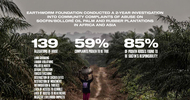by Ashby Monk
A new report by PRI offers some really useful information for investors interested in accessing farmland opportunities... which, let's be honest, should be most of you out there. (Or at least all the long-term investors.) Why should you be interested? Let me whet your farmland appetite with the PRI introduction:
“Farmland investments can be labeled as simple property transactions which involve the acquisition and possibly development of land with agricultural potential for the production of crops or livestock or of leases to land... Farmland investments present investors with opportunities to capture superior risk and inflation-adjusted returns. Unlike other physical assets considered an inflation hedge such as gold, farmland generates an annual income, and capital values are driven by demand for agricultural commodities rather than the dynamics of financial markets. This makes investing in farmland particularly attractive to those wishing to hold productive assets that are not affected by volatility in financial markets.”
So farmland is an uncorrelated, cash-flow-generating asset that will appreciate as the global population grows (which it will) and demands more food (which it will). That seems a pretty sound bet to me! (And for those of you that need to see a track record before you'll commit to buying your own groceries, over the past four decades US agriculture has outperformed stock and bond markets. Boom: Track record.)
And so farmland is a real opportunity for long-term investors, which brings us back to the issue of access. Here’s the PRI report again:
“There are various ownership and/or operating models that institutional investors can adopt for farmland, including:
- Buy the land and operate at their own risk (with exposure to the commodity price of the crop);
- Buy and lease to a farmer (receiving a fixed rate return);
- Buy and receive revenue based on a combination of the two previous models (crop sharing);
- Lease from the owner and operate at their own risk or shared risk.”
Hmmmm. That sounds pretty tough. And this, dear readers, is ultimately why most institutional investors don’t get involved: Attractive access points require investors to be direct and operational-minded, which is 1) hard and 2) uncommon (especially among the public pensions and sovereign funds that would be most likely to find these investments attractive).
And so this is where I'd like to give a plug to my friends over at TIAA-CREF, as they deserve real kudos for their work in this space. For example, earlier this year the fund seeded a new company to invest its own assets as well as those of peers in farms in the developed and developing world. Here’s how Anders Stromblad, head of external managers, at AP2 (an investor in the vehicle) described the TIAA-CREF opportunity:
“TIAA-CREF offers investors access to this important, emerging asset class through a sustainable, transparent platform. Importantly, TIAA-CREF’s interests are aligned with ours.”
As far as an external vehicle to access farmland is concerned, that sounds pretty awesome. That's an investment model that I'd like to see become the 'future of finance'; one that is grounded in the real economy.
Anyway, you can download the entire PRI report here – it’s worth reading in its entirety, as it also has five case studies of funds making farmland investments.














